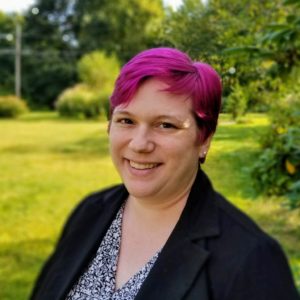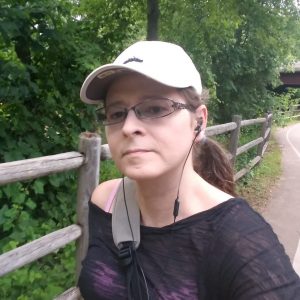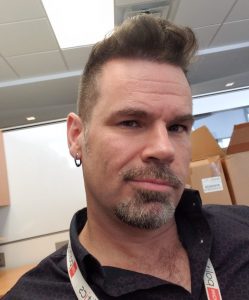Being bi, but not believed, sparks depression, says a new study
By Dawn Ennis
The struggle of leaving the closet, coming out and living authentically is one of the biggest challenges anyone LGBTQ can face. Fears of rejection by family and friends, doubts about job security, and the threat of being judged a sinner can nail that door shut for years, even decades.
Fortunately, many gays, lesbians, bisexuals, transgender, and queer folks feel coming out today is easier than it was just a few years ago.
Acceptance of same-sex couples, their rights to marry and equal career opportunities has never been higher, according to Gallup’s most recent poll. Yet there are still haters, bigots, and zealots who refuse to open their hearts, here and beyond Connecticut.
In fact, a GLAAD survey in June found LGBTQ acceptance has actually dipped among Americans ages 18 to 34. It was the second consecutive year that this age group has shown a drop.

It’s to be expected that changes in our culture, our state laws, and a remarkable revolution in religious tolerance won’t be universally embraced. But who knew those advances might benefit certain members of our community more than others?
“An ex-girlfriend once exclaimed, ‘I just don’t understand how you can be attracted to men and women,’” says Vickey Allen of Middletown. “Luckily, my response – ‘I don’t understand how you’re only attracted to women’ – clarified it for her.”
Allen, 32, works as an office administrator at a church in the United Church of Christ – known as the most progressive mainline Protestant church – and she is pursuing a master’s degree in religious studies at Hartford Seminary. “I feel blessed to have grown up in a denomination that never told me I was going to hell because I’m not straight.”

She was 12 when she first realized that she was bisexual, Allen says. Since then, she says, “I’ve encountered plenty of biphobia.”
Biphobia can occur both within and outside the LGBTQ community. The Human Rights Campaign (HRC) defines it as “prejudice, fear, or hatred directed toward bisexual people. It can include making jokes or comments based on myths and stereotypes that seek to undermine the legitimacy of bisexual identity, like ‘bisexuality is a phase’ or ‘bi people are greedy,’ ” according to HRC.
“I’ve known I’m bisexual all my life,” says Jamie Fernandez of Greater Hartford. “I came out to friends as bisexual and was quickly called ‘greedy,’ told to ‘pick a side’ or asked if I flipped a coin to decide. For many years, I denied part of myself.”
Fernandez, 43, is a bisexual transgender woman in a polyamorous relationship with her husband of 14 years, and now a girlfriend. She works as a dishwasher, and says being trans has its own challenges apart from being bi.
“The only complications I’ve had are getting a job and being respected for the person I am,” says Fernandez. Her gender transition – fully separate from her sexual identity – included an awakening of what being bi really meant for her.
“I didn’t have issues with me being bisexual; others did,” Fernandez says. “And I internalized that and did the same harmful behaviors others do in dismissing the validity of others’ lives.”
Those behaviors can include rude assumptions that bi people are straight or gay based on the gender of the person they are currently dating. They’re also often excluded or feel erased in LGBTQ spaces and conversations about LGBTQ issues.
A study published in the Journal of Self and Identity in May found that bisexual individuals often experience identity denial. In addition, bi people may feel discriminated against, and develop stress and depression because others question or deny their sexual identity, researchers said.
“Our findings suggest that the unique experiences of discrimination that bisexual individuals deal with on a regular basis may negatively impact their own feelings of acceptance in the world and their mental health,” says Melanie Maimon, lead researcher and a graduate student of social psychology at Rutgers University in New Jersey.
HRC says bisexual people typically suffer significantly higher rates of depression and anxiety, domestic violence, sexual assault, and poverty than lesbians, gay men, or straight cisgender people. Bisexuals also face major health disparities and poor healthcare outcomes from a lack of adequate preventative care.
“Doctors can sometimes be an issue,” says Fernandez, who adds she’s not afraid to confront bias and ignorance, especially when it comes to her orientation. “I think it’s ignorant to think people’s sexuality is a phase,” she says.
That word – “phase” – is perhaps the most common misconception about bisexuality; that either someone cannot choose between being gay or straight or is temporarily caught in between those orientations.
In addition to soliciting opinions from across Connecticut, we sought the perspectives of bi people around the country via social media about their orientation being nothing more than a “phase.”

“If it is,” says Caleigh Price, 47, “It’s a reeeaaallllyyyy long one.” Price is a married, work-from-home mom in Alamogordo, N.M.
Eric Reber of Atlanta is 48, and a media librarian at CNN who’s been observing biphobia for decades. “My favorite from the ‘90s: ‘He’s confused about his lifestyle,’ from other gay men. And also, ‘You need to choose because of AIDS.’”
Melody Mitchell, a 47-year-old bi truck driver from Arkansas wrote on social media: “Nah, bell-bottoms were a phase. I think of myself as bisexual, because I see the beauty in all forms of love between consenting adults.”
“I say it’s as much a phase as heterosexuality is a phase,” says Erin Bigelow, a 36-year-old TV studio manager for Verizon in New York City. “I’m bisexual even when I’m in a committed relationship because I’m attracted to the person, not their gender.”
“Everything is a phase. Life is a phase,” says Jen Carpenter, who works for a supermarket chain in Delaware. “To invalidate anyone’s sexuality based on a time frame is to invalidate life. Nothing is finite, most importantly life. But is that to say that we are not alive just because one day we will not be?
“I choose ‘queer’ these days because my bisexuality feels more complex than the term implies,” Carpenter adds. “But I knew at a very young age that I was attracted to the opposite and the same sex. So, I don’t get wrapped up in the word ‘phase.’ ”
Sometimes, terms are applied with too broad a stroke, and misunderstood. For example, bisexuality is not the same as pansexuality. Pan is from the Greek root meaning “all.” So, pansexual people are attracted to people of all genders, regardless of how they identify, be it cisgender male, cisgender female, non-binary, agender, transgender, and so on.
Bisexual people, by contrast, are not limited to only two identities in terms of attraction. Bi folks are attracted to two or more gender identities – but not necessarily all. Some are, some aren’t, some rule out or rule in certain sexes. It’s very individual, and for some non-bisexual people, confusing.
But it’s ironic that there’s so much confusion about bisexuals, given that studies show that as many as half of the LGBTQ population identify as bi, making them the single largest group in the community. That’s according to research by the Williams Institute at UCLA in 2011 and the Human Rights Campaign.
A study by YouGov (yougov.com) updated that statistic in 2018: when more than 1,000 adults were asked how they identify, the vast majority – 86 percent – said straight, but 2 percent said either gay or lesbian, while 3 percent responded that they identify as bi.
In the 1970s, Woody Allen – or was it Rodney Dangerfield? – joked that “Bisexuality automatically doubles your chances for a date on Saturday night.”
All joking aside, more and more celebrities now identify as bi: late night talk show host and YouTube personality Lilly Singh; NFL free agent Ryan Russell; actresses Sara Ramirez, Michelle Rodriguez, Shannon Purser, and Drew Barrymore; singer-songwriters Janelle Monáe, Miley Cyrus, as well as the late David Bowie and Freddie Mercury. And there are bi politicians, too: Oregon Gov. Kate Brown and U.S. Sen. Kyrsten Sinema of Arizona are America’s first out bi governor and U.S. senator, respectively.
Those big names, and more, often take part in Bi Visibility Day (also known as International Celebrate Bisexuality Day) on September 23, which falls during Bisexuality Awareness Week, or BiWeek. The goal is to create a platform for advocating for bisexual rights and to promote acceptance of the bi community.
That’s also why the city of West Hollywood, Calif., famous for hosting its LA Pride Parade every June, was the location for the second annual WeHo Bi Pride Celebration in September. The event is billed as the first city-sponsored bi pride event in the world, and a welcoming place for bisexual singles, as well as couples.
“I came out to my now-husband after we were engaged. This was 1993,” wrote Bridie Pearce of Winchester, N.H. “My husband is a cisgender straight male. I am a bisexual gender-fluid person.” Pearce, 45, works as a layout graphic designer and webmaster. Her husband is an IT project manager.
“We have been married 25 years and have four kids,” she says: two girls and two boys, ranging in age from 5 to 25. Their 24-year-old daughter is lesbian, an 18-year-old son is asexual, the oldest son is straight, and their youngest daughter “hates all boys except her father and brothers,” she says.
Pearce says she dated a girl in high school, back in the early 1990s, when “it was not safe for us to be out.” But as to whether she wished she had married a woman instead of her husband, she says, “No. I fell in love with a person.”
She said she is flexible as to how she identifies, going by whatever pronoun suits her presentation. “I prefer she and they,” Pearce said. “Within my marriage, I can be me. My husband supports me expressing myself in my outward appearance.
“However, in our bedroom, with just the two of us, I use additional methods to represent my masculine side,” she says. “And while he is 100 percent straight, he has also been 100 percent in support of our change in roles.”
Pearce was candid about what it’s like being in a monogamous marriage as a bisexual woman. “I do not think being bi has more or less complications in a marriage, but I do think it opens up real self-examination as well as exploration,” she says. “Communication of both of our needs and desires really has kept our marriage working.”
Of course, the one constant for almost any woman in a relationship with a man is patience. It’s no different for Pearce and her husband.
“There are some things a straight cis male has a difficult time understanding, but the fact he is working through those things with me, still, after all these years? I am more in love with him now than I was back then, at age 19.”








More Stories
Connecticut Sun: Playing for Good
Call Him Mister Connecticut: Jean Carlo Salazar’s Journey as Nurse, Model and Pageant Contestant
Ensuring a Seat at the Table